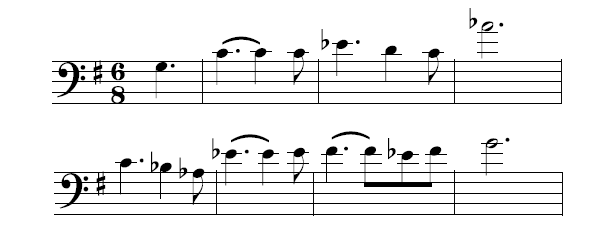Another term that usually refers to a piece of melody (although it can also refer to a rhythm (Section 2.1) or a chord progression (Chords)) is "motif". A motif is a short musical idea – shorter than a phrase - that occurs often in a piece of music. A short melodic idea may also be called a motiv, a motive, a cell, or a figure. These small pieces of melody will appear again and again in a piece of music, sometimes exactly the same and sometimes changed. When a motif returns, it can be slower or faster, or in a different key. It may return "upside down" (with the notes going up instead of down, for example), or with the pitches or rhythms altered.

Most figures and motifs are shorter than phrases, but some of the leitmotifs of Wagner's operas are long enough to be considered phrases. A leitmotif (whether it is a very short cell or a long phrase) is associated with a particular character, place, thing, or idea in the opera and may be heard whenever that character is on stage or that idea is an important part of the plot. As with other motifs, leitmotifs may be changed when they return. For example, the same melody may sound quite different depending on whether the character is in love, being heroic, or dying.

- 3879 reads






